Astronomy: Everything you need to know
Astronomy was born out of humankind's ancient fascination with the star-studded sky.
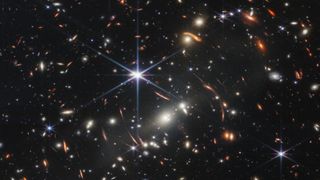
Astronomy is one of the oldest scientific disciplines that has evolved from the humble beginnings of counting stars and charting constellations with the naked eye to the impressive showcase of humankind's technological capabilities that we see today.
Despite the progress astronomy has made over millennia, astronomers are still working hard to understand the nature of the universe and humankind's place in it. That question has only gotten more complex as our understanding of the universe grew with our expanding technical capabilities.
As the depths of the sky opened in front of our increasingly sophisticated telescopes, and sensitive detectors enabled us to spot the weirdest types of signals, the star-studded sky that our ancestors gazed at turned into a zoo of mind-boggling objects including black holes, white dwarfs, neutron stars and supernovas.
Related: Famous astronomers: How these scientists shaped astronomy
At the same time, the two-dimensional constellations that inspired the imagination of early sky-watchers were reduced to an optical illusion, behind which the swirling of galaxies hurtling through spacetime reveals a story that began with the Big Bang some 13.8 billion years ago.
Here is how the story of astronomy and our understanding of the universe evolved.
Astronomy FAQs
What is astronomy?
Astronomy uses mathematics, physics and chemistry to study celestial objects and phenomena.
What are the four types of astronomy?
Astronomy cannot be divided solely into four types. It is a broad discipline encompassing many subfields including observational astronomy, theoretical astronomy, planetary science, astrophysics, cosmology and astrobiology.
What do you study in astronomy?
Those who study astronomy explore the structure and origin of the universe including the stars, planets, galaxies and black holes that reside in it. Astronomers aim to answer fundamental questions about our universe through theory and observation.
What's the difference between astrology and astronomy?
Astrology is widely considered to be a pseudoscience that attempts to explain how the position and motion of celestial objects such as planets affect people and events on Earth. Astronomy is the scientific study of the universe using mathematics, physics, and chemistry.
History of astronomy: The beginnings
Most of today's citizens of planet Earth live surrounded by the inescapable glow of modern urban lighting and can hardly imagine the awe-inspiring presence of the pristine star-studded sky that illuminated the nights for ancient tribes and early civilizations. We can guess how drawn our ancestors were to that overwhelming sight from the role that sky-watching played in their lives.
Ancient monuments, such as the 5,000 years old Stonehenge in the U.K., were built to reflect the journey of the sun in the sky, which helped keep track of time and organize life in an age that solely depended on seasons. Art pieces depicting the moon and stars were discovered dating back several thousand years, such as the "world's oldest star map," the bronze-age Nebra disk.
Ancient Assyro-Babylonians around 1,000 B.C. systematically observed and recorded periodical motions of celestial bodies, according to the European Space Agency (ESA), and similar records exist also from early China. In fact, according to the University of Oregon, astronomy can be considered the first science as it's the one for which the oldest written records exist.
Ancient Greeks elevated sky-watching to a new level. Aristarchus of Samos made the first (highly inaccurate) attempt to calculate the distance of Earth to the sun and moon, and Hipparchus sometimes considered the father of empirical astronomy, cataloged the positions of over 800 stars using just the naked eye. He also developed the brightness scale that is still in use today, according to ESA.
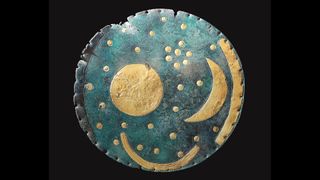
History of astronomy: The arrival of the telescope
During the Middle Ages, the science of astronomy continued to advance in Asia and the Islamic world. Islamic scholars kept building on the knowledge of the Ancient Greeks, expanding the catalog introduced by Hipparchus. They also developed new tools for measuring the positions of objects in the sky such as the quadrant and the sextant, according to ESA.
The first true breakthrough in humankind's exploration of the universe, however, arrived with the invention of the telescope in the 17th century. Italian astronomer Galileo Galilei was an early adopter and developer of the technology, which enabled him to make major strides in the understanding of our solar system.
Called "the father of modern science" by no other than the great Albert Einstein, Galileo was able to sketch the surface of the moon, discover the main moons of Jupiter, find sunspots on the sun, and much more, thanks to the telescope.
The invention of the telescope supercharged astronomy. Despite the objections of the Catholic Church, the notion that Earth wasn't the center of the universe but orbited the sun together with other planets and their moons could no longer be denied.
Astronomy at that time played a key role in helping seafarers and travelers navigate the globe, and so, first, government-funded observatories, the Paris Observatory and the Royal Greenwich Observatory were established in 1667 and 1675 respectively with the goal of building more accurate stellar maps.
In the 18th century, astronomers for the first time managed to calculate the distance of a nearby star, adding a third dimension to stellar catalogs.
The advent of photography in the 19th century simplified the charting of the night sky and the stellar position catalogs quickly grew from a few thousand to tens of thousands of stars, according to ESA. The first photographs of the moon and sun were published in the 1840s followed by the images of the first star, Vega, about a decade later.
The discovery of spectroscopy, a discipline analyzing the ability of matter to split light into different wavelengths depending on its chemical composition, opened new and completely unexpected avenues of astronomical research in the second half of the 19th century. With spectroscopy, astronomers could study the chemical composition of celestial objects, first of those nearby, such as the moon and the sun, and later the more distant ones, including other stars and even galaxies. Suddenly, astronomy was not only about where things were located in the universe but also about what they were made of.

History of astronomy: The boom of the modern era
Hand in hand with the overall rocket-speed technological progress that the world has witnessed since the beginning of the 20th century grew the ability of astronomers to see farther and analyze more precisely.
In the early 20th century, fast improvements in telescope technologies led astronomers for the first time to question whether the Milky Way was synonymous with the universe or only one of many starry universes scattered in space. American astronomer Edwin Hubble solved this question in the 1920s when he managed first to distinguish individual stars in the Andromeda nebula, today known as the Andromeda galaxy, and eventually calculate their distances from Earth. These stars were so much farther away than anything else in our galaxy that Hubble concluded that Andromeda is its own Milky Way. A new, much deeper universe suddenly unfolded in front of astronomers' eyes.
Other "nebulas" were soon confirmed as galaxies. Within a decade, astronomers realized that these nebulas were speeding away from Earth the faster the farther away they were, according to Science News. This discovery led to the idea that the universe was expanding probably from the time of a giant explosion that had created it in the most distant past. The Big Bang theory was born.
The Second World War sped up technological progress even further, ushering in the era of spaceflight and exploration of the universe from space. What only a few decades prior would have been the stuff of science fiction was quickly becoming reality.
In 1957, the U.S.S.R launched the first-ever satellite, Sputnik. From then on, more and more complex scientific instruments would be installed on satellites and the picture of the orbital environment around Earth would start to emerge. In 1962, NASA's Mariner 2 became the first spacecraft to visit another planet, Venus, and in 1964, the first radio astronomy satellite, the U.K.'s Ariel 2, made it into orbit.
The space race of the 1960s culminated with the successful moon landings of the Apollo program. Scientists on Earth could, for the first time, hold in their hands' pristine pieces of rock from another celestial body. The U.S.S.R celebrated its own successes with the lunar rover Lunokhod, which analyzed 25 lunar soil samples with its onboard instruments.
In 1968, NASA launched the Orbiting Astronomical Observatory 2, nicknamed Stargazer, the first attempt to study the wider universe from space, according to USA. Today. Only a year later, plans for the Hubble Space Telescope started to shape up, although it would take more than two decades to get the grand telescope off the ground.
Since then, dozens of probes have been sent to study bodies in the solar system including planets, comets, moons and asteroids. Space telescopes, together with ever more powerful ground-based telescopes have revealed the star-studded sky in detail that the ancient tribesmen would never be able to even imagine.
The James Webb Space Telescope, launched on Christmas Day 2021, represents the pinnacle of this eternal endeavor that started thousands of years ago and grew from humble beginnings. Yet, the more astronomers see, the more questions are arising and the answers to the grand questions of the nature of the universe and our place in it remain elusive.
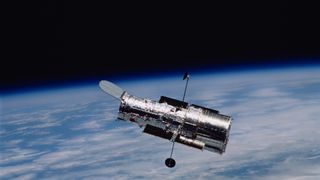
Types of astronomy
In the past century or so, astronomy has been broadly split into two camps — observational astronomy (using telescopes and cameras to collect data about the night sky) and theoretical astronomy (using that data to analyze, model and theorize about how objects and phenomena work).
They complement each other, yet within these two broad categories, modern astronomy includes many subsets, from astrometry to exoplanetology, that intrinsically overlap yet help explain the many things astronomers do. Here's what they all mean:
- Astrometry: This ancient branch of astronomy concerns precise calculations of the motions of the sun, the moon and the planets. It includes predictions of solar and lunar eclipses and meteor showers. It also includes exoplanetology, a relatively new and very exciting field that concerns itself with the discovery and characterization of planets outside of the solar system.
- Planetary astronomy: How did the solar system come to be? This is the central question penetrating planetary astronomy, which focuses on the formation, evolution and death of planets, moons and other objects in the solar system, it also includes planetary geology.
- Astrophysics: Astrophysicists apply the laws and theories of physics to astronomical observations. It's an attempt to understand the mechanism behind how the universe was created and how it has and will evolve.
- Astrochemistry: Astrochemists study the composition and reactions of atoms, molecules and ions in space.
- Astrobiology: This emerging and, for now, largely theoretical field of astronomy is the study of life beyond Earth.
- Stellar astronomy: The study of the life cycle and structure of the sun and the stars, stellar astronomy concerns the classification of stars, and populations of stars.
- Galactic astronomy: astronomers study our galaxy, the Milky Way, while extragalactic astronomers peer outside of it to determine how these groups of stars form, change and die.
- Cosmology: Although it's sometimes used to mean astronomy, strictly speaking, cosmology refers to the science of the origin and nature of the universe. The key concept in cosmology is the Big Bang Theory, the most widely accepted explanation of how the universe began. Cosmology also includes purely theoretical subjects including string theory, dark matter and dark energy, and the notion of multiple universes.
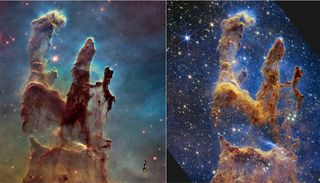
What are optical, infrared and radio astronomy?
All astronomy is the study of different wavelengths of the electromagnetic spectrum, which comprises radio, microwave, infrared, visible, ultraviolet, X-ray and gamma rays. To get the full picture of what's out there astronomers need to study various wavelengths of light.
Optical astronomy is the study of celestial objects using telescopes that observe visible light. Infrared light can be detected outside of the Earth's atmosphere, so by space-based observatories like the Hubble Space Telescope and the James Webb Space Telescope. Radio astronomy is the study of the sky in radio frequencies; radio telescopes detect and amplify radio waves from space.
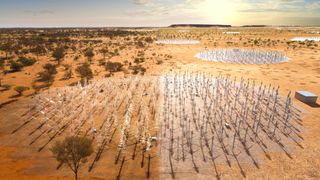
The problem with astronomy
However they observe the universe, astronomers only ever get a snapshot of the planets, stars and galaxies they study. So although there are dozens of different branches of astronomy, in practice many of them must overlap for an astronomer to get as full a picture as possible of objects that exist for millions to billions of years.
We're on the cusp of some tremendously exciting new technology that looks set to revolutionize astronomy. In addition to the James Webb Space Telescope a range of ground-breaking Earth-based telescopes is set to come online within this decade including the Vera Rubin Observatory all-sky survey, the Extremely Large Telescope and the Square Kilometre Array, the world's largest radio telescope.
Astronomers are about to see deeper into space to observe regions and objects never seen before.
The difference between astronomy and astrology
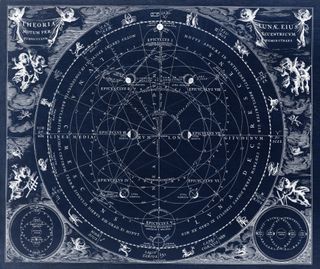
Astronomy and astrology have grown from the same roots. Ancient civilizations and early tribesmen believed that the sky held power over their lives and that by observing the motions of celestial bodies, one could learn about the future.
The close bond between the two disciplines survived millennia. During the renaissance period, astronomers were frequently hired as personal advisers to monarchs to advise on decisions based on the positions of stars and planets, according to Astronomica.
But as the scientific method grew in strength over the subsequent centuries, astronomy and astrology have grown apart. While astronomy has become the domain of no-nonsense data-driven observations and verifiable predictions relying on the most cutting-edge technology, astrology was reduced to the realm of new-age superstition where considerably less educated future predictors use glass crystals and simplistic star charts to predict the path of a person's life.
In fact, astronomers point out, that due to the irregularity of Earth's orbit, the position of the sun within the zodiac signs, which form the backbone of western astrology and which were identified centuries ago, no longer matches the actual position of the sun. So while you may have been told you were born in Taurus, you actually could have been born in Aries.
Jobs in astronomy
If star-gazing is your calling and you think of making it your life's path, you can find some useful insights about what it takes to be an astronomer on the website of the International Astronomical Union. The Royal Astronomical Society also has many useful resources in its Careers section.
If you are already further down the path and looking for a suitable opening based on your qualifications, the American Astronomical Society lists all kinds of openings all over the world on its jobs register site.
If you wonder how much you'd earn in an astronomy-related career, the SciJournal lists ten highest paying astronomy jobs.
Additional resources
Read this detailed three-part series by the European Space Agency about the history of astrometry from the earliest times, to the emergence of telescopes to modern space-based observations. This ScienceNews feature tells the story of the major leaps in astronomers' understanding of the universe in the first half of the 20th century. This article by the Royal Society provides a detailed overview of the evolution of astronomy in the post-war era. To learn more about the early days of the telescope and the role of Galileo Galileo in shaping modern astronomy, check this article by the Library of Congress.
Bibliography
European Space Agency, A history of astrometry - Part I - Mapping the sky from ancient to modern times, September 1, 2019
https://sci.esa.int/web/gaia/-/53196-the-oldest-sky-maps
European Space Agency, A history of astrometry - Part II - Telescopes ignites the race to measure stellar distances, September 1, 2019
https://sci.esa.int/web/gaia/-/53197-seeing-and-measuring-farther
European Space Agency, A history of astrometry - Part III - Astrometry moves to space: The mapmakers guide to the galaxy
https://sci.esa.int/web/gaia/-/53198-astrometry-in-space
The Royal Society, A brief history of astronomy, astrophysics and cosmology 1945-2000, June 9, 2022
https://royalsociety.org/blog/2022/06/brief-history-of-astronomy-astrophysics-and-cosmology-1945-2000/
ScienceNews, In 20th century, astronomers opened their minds to gazillions of galaxies, February 2, 2017
https://www.sciencenews.org/blog/context/20th-century-astronomers-opened-their-minds-gazillions-galaxies
Library of Congress, Galileo and the Telescope, https://www.loc.gov/collections/finding-our-place-in-the-cosmos-with-carl-sagan/articles-and-essays/modeling-the-cosmos/galileo-and-the-telescope
Join our Space Forums to keep talking space on the latest missions, night sky and more! And if you have a news tip, correction or comment, let us know at: community@space.com.
Get the Space.com Newsletter
Breaking space news, the latest updates on rocket launches, skywatching events and more!

Jamie is an experienced science, technology and travel journalist and stargazer who writes about exploring the night sky, solar and lunar eclipses, moon-gazing, astro-travel, astronomy and space exploration. He is the editor of WhenIsTheNextEclipse.com and author of A Stargazing Program For Beginners, and is a senior contributor at Forbes. His special skill is turning tech-babble into plain English.
